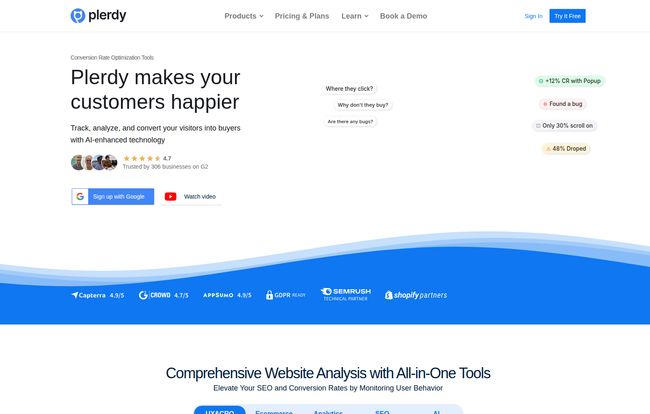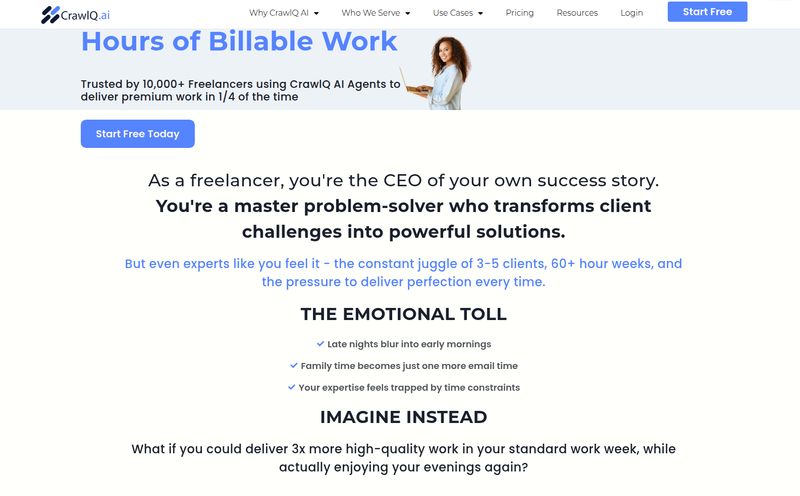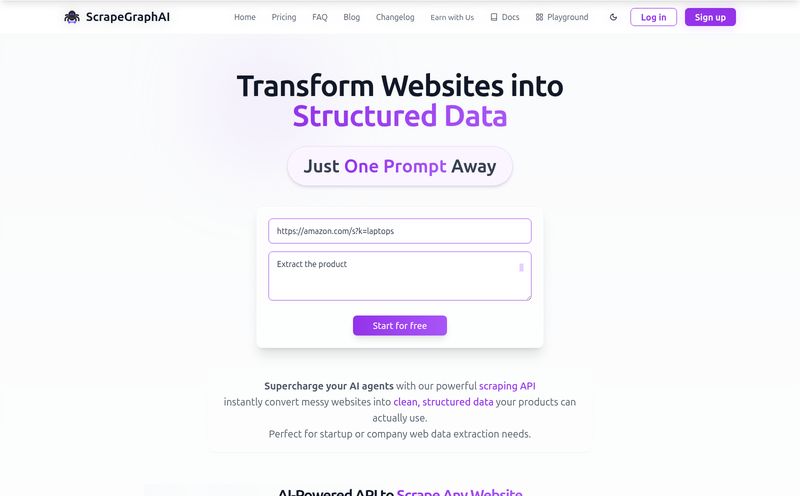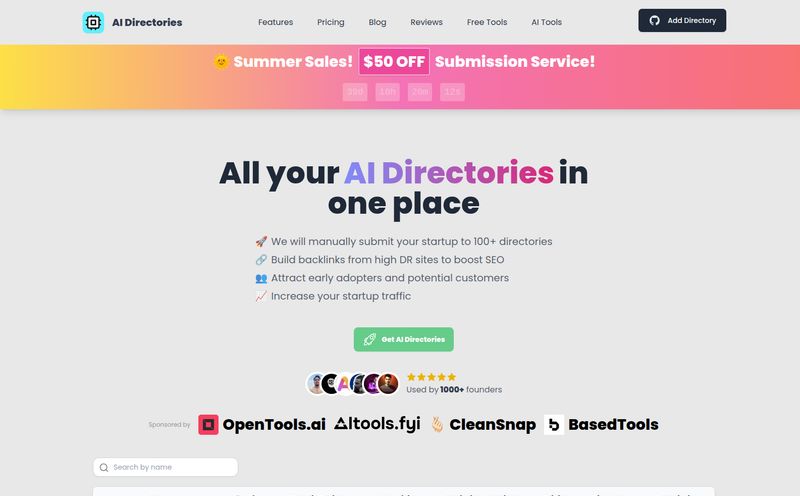Ever feel like you’re throwing spaghetti at the wall with your website? You tweak a button color here, rewrite a headline there, and pray to the traffic gods that something, anything, will boost your conversions. I’ve been there. For years, my analytics stack was a messy patchwork of different tools—one for heatmaps, another for pop-ups, and a third for some basic SEO checks. It was expensive, clunky, and honestly, a bit of a nightmare to manage.
Then I stumbled onto Plerdy. At first, I was skeptical. Another “all-in-one” platform promising the world? Yeah, right. But the more I played around with it, the more I realized it was different. It felt… intuitive. It felt like it was built by people who actually understand the day-to-day grind of trying to make a website work better.
So, is Plerdy the real deal? Let’s get into it. This isn’t going to be one of those bland, corporate reviews. This is my real take, as a professional blogger who lives and breathes this stuff.

Visit Plerdy
So What Is Plerdy, Really?
On paper, Plerdy is a Conversion Rate Optimization (CRO) tool suite. But that’s a mouthful of marketing jargon. What it really is, is a pair of X-ray glasses for your website. It lets you see exactly what your visitors are doing: where they click, how far they scroll, what they ignore, and where they get frustrated and leave. It’s a whole suite of tools bundled into one neat package, designed to stop the guesswork and start making data-driven decisions.
Think of it as a Swiss Army knife for website optimization. Instead of paying for Hotjar for heatmaps, OptinMonster for pop-ups, and a separate service for user feedback, Plerdy rolls it all into one dashboard. And for someone who values a clean workflow (and a less terrifying credit card bill), that’s a massive win.
My Favorite Plerdy Features (And Why You'll Love Them)
Plerdy is packed with features, but a few of them have become absolutely essential to my workflow. These are the ones that provide those 'aha!' moments that change how you see your own site.
Website Heatmaps: The Digital Treasure Map
I’ve always been a sucker for a good heatmap. It's the most visual way to understand user behavior at a glance. Plerdy’s heatmap tool is fantastic. It gives you:
- Click Maps: See exactly where people are clicking. You’ll be surprised by how many people click on things that aren't even links! This is gold for improving your UI.
- Scroll Maps: Find out how far down the page most people actually go. Is your most important call-to-action buried too far down? A scroll map will tell you in seconds.
- Mouse Hover Maps: Tracks where users move their mouse, which often correlates with where they're looking. It’s like a low-key eye-tracking study without the crazy lab equipment.
These maps stop you from debating with your team about where a button should go. The data shows you. No more arguments, just results.
Session Replays: Binge-Watching Your Users for Insights
This is easily one of the most powerful—and addictive—features. Session replays are literal video recordings of a user's session on your site. You can watch their mouse movements, clicks, and scrolls in real-time. You can see them rage-clicking a broken button or hesitating on the checkout page. It’s like being able to look over their shoulder, and the insights are just incredible. I once spent a whole afternoon just watching replays and came away with a list of a dozen small fixes that instantly improved our user experience.
Pop-Up Software & Feedback Tools
I know, I know. Nobody likes pop-ups. But when used correctly, they work. Plerdy’s pop-up builder is smart. You can create custom pop-ups that appear based on user behavior—like when they’re about to leave the site (exit-intent) or after they’ve scrolled 70% of the way down a blog post. It’s great for capturing emails or promoting a special offer without being super annoying.
Plus, they have integrated feedback tools and Net Promoter Score (NPS) surveys. You can just ask your visitors what they think! Groundbreaking, I know. But so few sites do it well.
The Built-in SEO Checker
Now, lets be real, this tool isn't going to replace Ahrefs or Semrush. It’s not meant to. But what it does is provide a quick and dirty SEO audit right from your dashboard. It scans your pages for common issues like missing titles, duplicate content, and keyword problems. It’s a fantastic little value-add that helps you catch low-hanging fruit without having to log into yet another platform. For a quick health check, it's surprisingly robust.
Let's Talk Money: Plerdy's Pricing Plans
This is often the make-or-break question. The good news? Plerdy is surprisingly affordable, especially given everything it does. The best part is the entry point.
They have a Forever Free plan. And it’s not one of those useless free plans that barely lets you do anything. It includes daily heatmaps, 500 video sessions per month, and even the SEO audit. For a new blog or a small business, this is an absolute game-changer. You can get real, actionable insights without spending a dime.
Of course, as you grow, you'll want more. Here's a quick look at their paid plans (prices are when billed yearly):
| Plan | Price (Billed Yearly) | Best For |
|---|---|---|
| Free | $0 / Forever | Beginners, small blogs, anyone wanting to test the waters. |
| Startup | $21 / month | Growing websites and small businesses needing higher limits. |
| Scale | $42 / month | Established businesses and marketing agencies. |
| Thrive & Enterprise | $70+ / month | High-traffic websites and large-scale operations. |
Note: These prices are based on the information available at the time of writing. For the most current details, you should definitely check Plerdy's official pricing page.
The Not-So-Great Stuff (Let's Be Honest)
No tool is perfect. While I’m obviously a fan, there are a couple of things to keep in mind. The main drawback is simply the nature of the freemium model. The limits on the free plan are generous for starting out, but if your site gets any decent amount of traffic, you'll hit those caps on session replays and heatmap data pretty quickly. You’ll find yourself wanting to upgrade to get the full picture. But honestly, that’s a good problem to have—it means you’re getting enough traffic to need more data!
Frequently Asked Questions About Plerdy
I get asked about tools like this all the time, so here are some quick answers to the usual questions.
1. Is Plerdy hard to install?
Not at all. It's just a single snippet of tracking code you add to your website's header. If you've ever installed Google Analytics, you can install Plerdy. They also have easy integrations for platforms like WordPress, Shopify, and Google Tag Manager that make it even simpler.
2. Will Plerdy slow down my website?
This is a huge concern for any third-party script, and rightly so. Plerdy's script is designed to load asynchronously, which means it doesn't block your page from loading. In all my tests, the impact on site speed has been minimal to non-existent. They seem to take performance seriously, which is a huge plus.
3. How is Plerdy different from Hotjar or Crazy Egg?
It's a fair question. They all play in the same sandbox. In my experience, Plerdy's main edge is its all-in-one approach. It bundles the SEO checker and more advanced pop-up functionality into its core offering, whereas with other tools you might need separate subscriptions. The pricing, especially the free tier, is also highly competitive.
4. Is the data from Plerdy accurate?
Yes. Data accuracy is high on their list of priorities. They use their own scripts to avoid data sampling (which some other tools do on lower-tier plans), so what you see is a true reflection of user activity on your site.
5. Is the free plan really free forever?
Yep. It’s not a trial. You can use the free plan with its specified limits for as long as you want. That's what makes it such a great starting point.
Final Verdict: Is Plerdy Worth It?
So, what's the final word? Yes, absolutely.
For me, Plerdy has filled a major gap. It consolidated my tool stack, saved me money, and most importantly, it gives me the insights I need to make tangible improvements to my websites. It removes the ego and the guesswork from web design and marketing and replaces it with cold, hard data—presented in a way that’s actually easy to understand.
If you're a marketer, a business owner, a blogger, or a UX designer, you owe it to yourself to try it out. The fact that you can get started with a powerful suite of tools for free makes it a complete no-brainer. Stop guessing what your users want and start watching what they do. You’ll be amazed at what you learn.



